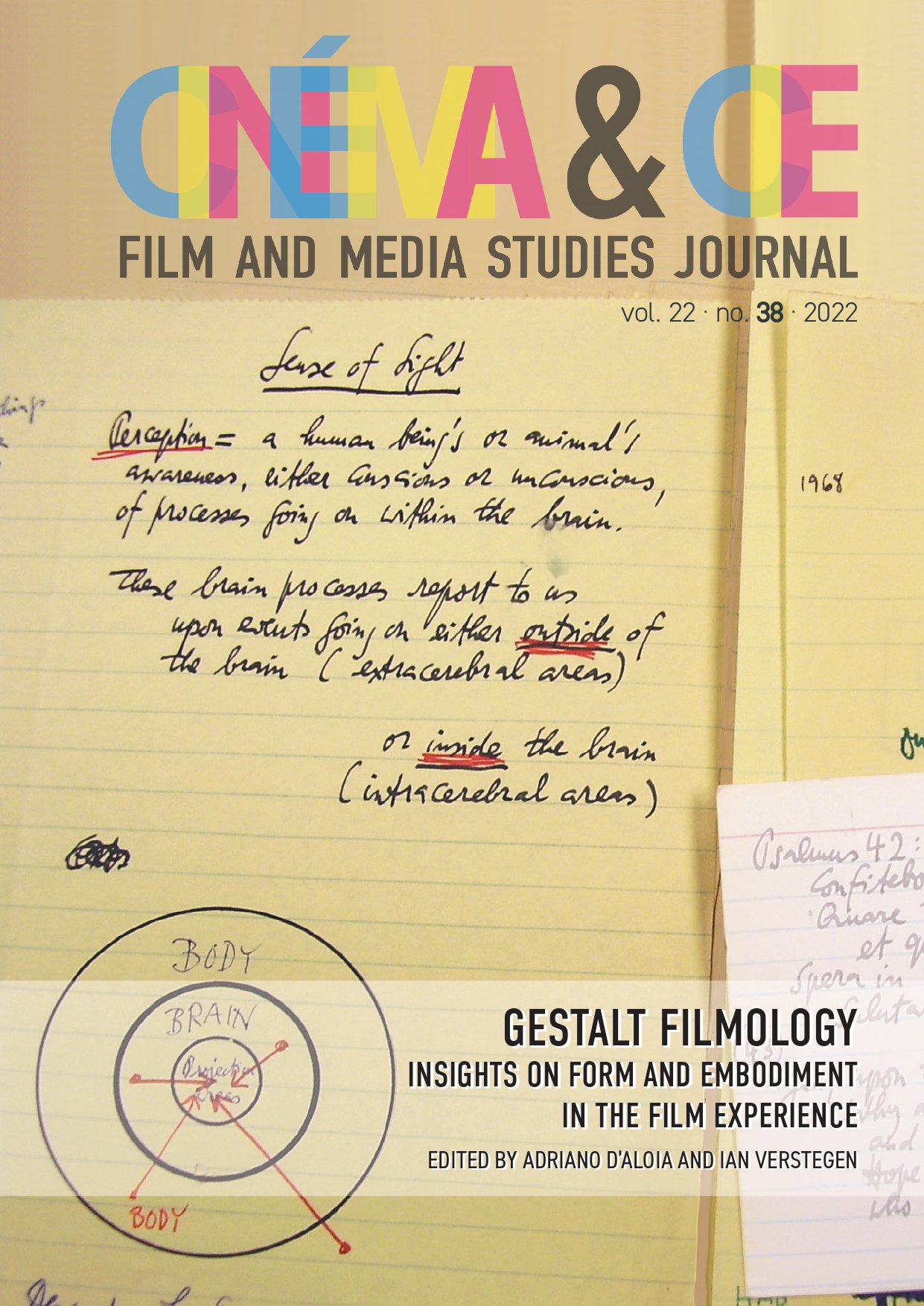The Future of the Past. Arnheim and Film Today
DOI:
https://doi.org/10.54103/2036-461X/17977Keywords:
Rudolf Arnheim, Gestalt Psychology, Film as Art, Gestalt Filmology, NeurofilmologyDownloads
Published
2022-06-27
How to Cite
D’Aloia, A., & Verstegen, I. (2022). The Future of the Past. Arnheim and Film Today. Cinéma & Cie. Film and Media Studies Journal, 22(38), 9–18. https://doi.org/10.54103/2036-461X/17977
Issue
Section
Introduction
License
Copyright (c) 2022 Adriano D’Aloia, Ian Verstegen

This work is licensed under a Creative Commons Attribution 4.0 International License.





